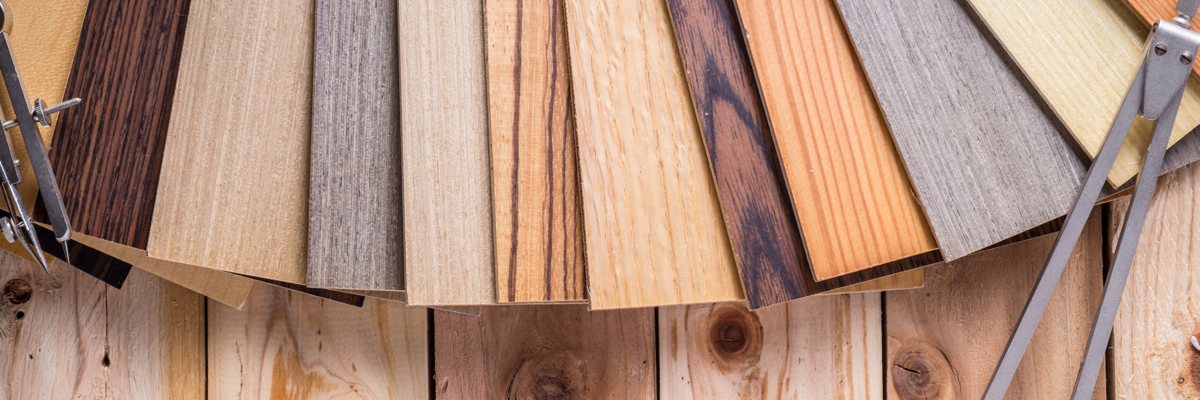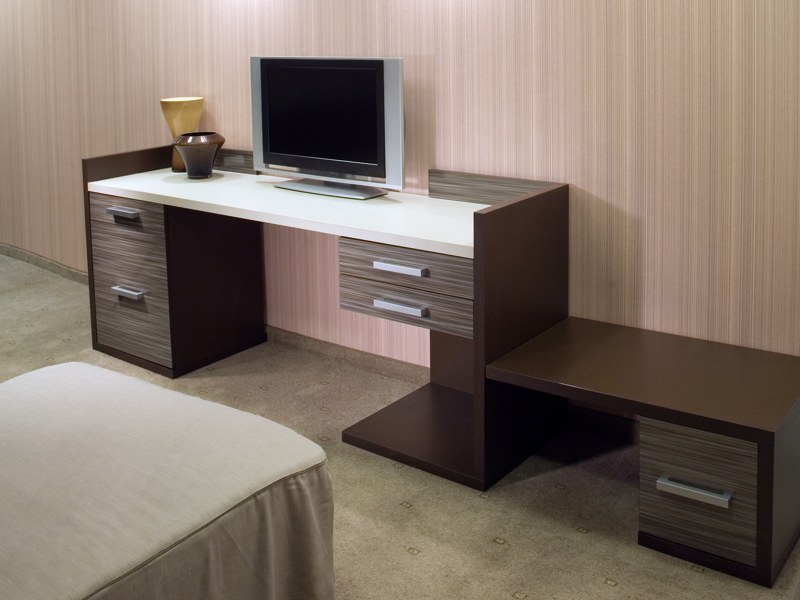Wood veneers in the simplest of terms are thin slices of natural wood generally less than 1/40” thick. These veneers are typically pressed onto or laminated to thicker core materials such as plywood, particle board and MDF to create structural panels to be used in place of thicker hardwood lumber. This is still real wood but machinery and technology allow the material to be sliced thin without waste instead of sawing it into thick boards. Just like thick boards, it can be plain sawn, quarter sawn, rift cut, or rotary cut and produce the many different grain patterns associated with each cut.
Along with natural hard and soft wood veneers, there are reconstituted or engineered wood veneers which are man-made but still natural wood cellulose fiber. These are made from renewable and highly sustainable forests and are often made to replicate exotic woods that are either endangered, limited, or very expensive to acquire.

How Wood Veneer is Processed
Wood veneer is processed at a mill much like a saw mill for hardwood lumber. Veneer logs, which comprise the top 1 to 2% of all harvested wood logs, first undergo a long period completely submerged in hot water “vats” to soften the wood fibers in preparation for slicing. After this long soak, the logs are prepped and readied for the slicing operation. There are different methods of slicing but all entail the process of a sharp knife cutting micro thin slices called leaves from the veneer logs. The slicing methods most commonly used are plain sawn or flat cut, rotary cut, rift cut and quarter sawn/cut, each producing a specific grain pattern. The freshly cut veneer leaves are put through a drying process and reassembled in bundles comprised of all the leaves from the same log in the same order they were sliced.
Producing the Standard Veneer Sheet Sizes
Producing veneer faces of a standard dimensional size such as 4’x8’ or 4’x10’ is the next step in the process. It takes multiple leaves of veneer to create a face or sheet that is 4’ wide. To accomplish this, the veneer leaves are knife cut lengthwise to create a true parallel edge. The leaves are glued edge to edge in the splicing operation to make faces in widths of 4’ and larger. These faces then will be backed with other materials such as paper, wood crossband, poly/resin back or phenolic. Almost complete at this point, the veneer sheets will go through a flexing operation and on to a final sanding operation. They are now ready to use for a multitude of manufacturing, woodworking, crafting and DIY purposes.
Cost Effective & Eco-Friendly Benefits of Real Wood Veneer
There are many benefits derived from using wood veneers instead of or in combination with traditional hardwood lumber. Using veneer is a more cost effective and efficient use of a natural resource, therefore more environmentally friendly. In comparison to a 1” thick hardwood board, wood veneer cut at 1/40” will yield 40 times more decorative surface area than the board. Because it’s a flexible wood, the physical properties of veneer make it possible to veneer surfaces that would be difficult or even impossible with hardwood lumber. The myriad choices of different wood veneers in varying cuts offer many more options than are usually available with hardwoods. The ability to stain and finish veneer to suit your individual taste is equally important and is no different than hardwoods. The result is a beautiful wood surface with depth, color, and unique character.
The Versatility of Using Wood Veneer
 While commonly used in building and construction for doors, wood cabinets, furniture, etc., the versatility of flexible wood veneers goes well beyond the traditional aspect. Architects and designers incorporate wood veneer into their plans as complete interiors or as accent to other mediums. Many upscale retailers incorporate wood veneers into their display fixtures. Lighting companies, signage companies, audiophile speaker manufacturers, musical instrument makers, RV, aircraft, and custom yacht manufacturers have all found ways to work this versatile material into their products. More recently there is a trend to use wood veneer in all types of DIY and craft focused businesses. Of these, some of the more unique uses are cell phone and mobile device cases, wooden invitations and greeting cards, jewelry, wall art and custom framing, and even eyewear.
While commonly used in building and construction for doors, wood cabinets, furniture, etc., the versatility of flexible wood veneers goes well beyond the traditional aspect. Architects and designers incorporate wood veneer into their plans as complete interiors or as accent to other mediums. Many upscale retailers incorporate wood veneers into their display fixtures. Lighting companies, signage companies, audiophile speaker manufacturers, musical instrument makers, RV, aircraft, and custom yacht manufacturers have all found ways to work this versatile material into their products. More recently there is a trend to use wood veneer in all types of DIY and craft focused businesses. Of these, some of the more unique uses are cell phone and mobile device cases, wooden invitations and greeting cards, jewelry, wall art and custom framing, and even eyewear.
